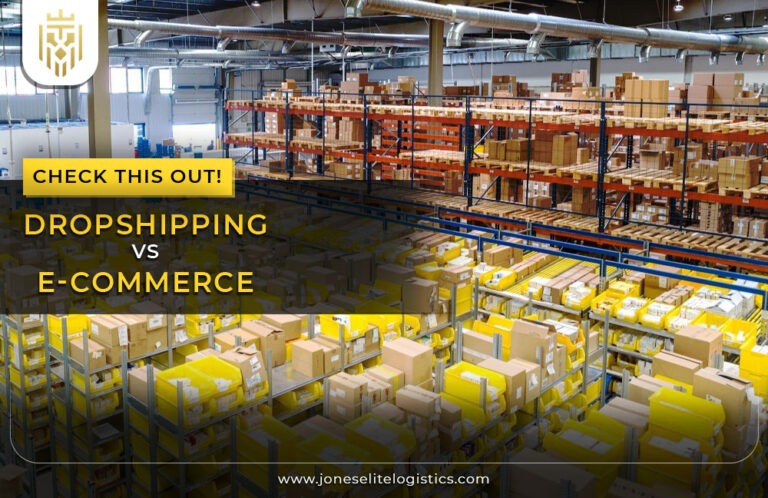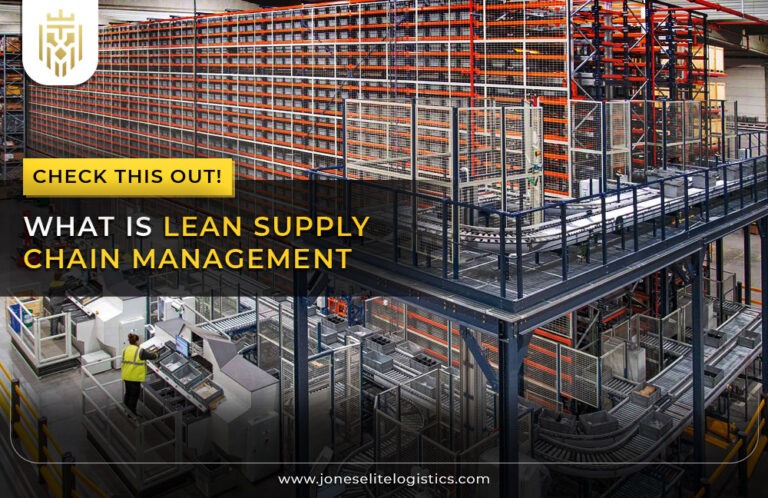Introduction to Supply Chain Management:
A customer opens an e-commerce app and orders the desired items. The order is notified, and the required items are procured from the company’s manufacturing unit. From there, it is then shipped to the end customer. The sequence of events that ensures the proper delivery of goods worldwide is called a supply chain, and ensuring this sequence is followed perfectly with minimal to zero defects is the management part. We shall go deeper to understand what is supply chain management (SCM):

Understanding the Basics:
SCM’s objective is to make the processes of logistics better, minimize the costs, and attain customer satisfaction at altitude. It covers the whole scope of the process, from the planning and implementation to the control of the flow of goods, services, and information across the supply chain network.
Importance in Modern Business:
SCM is a key aspect that makes business more effective thanks to a variety of factors like cutting production costs, getting customer service satisfaction, and so on. With the vast market terrain in the world today, it is crucial for SCM to ensure speedy and sustainable delivery with high-quality checks at all levels.
Components of Supply Chain Management:
SCM is a chain of components that are interlinked and rely on each other to get the task done, and these components include:
Procurement:
Procurement is a process of acquiring goods or services via the supply chain management whose input is required at the production process. Among them are the purchase of the necessary raw materials achieved via selecting the most suitable suppliers, negotiation, and contract management to ensure quality, cost-effectiveness, and timely delivery of materials.
Production:
Production is where raw materials are transformed into final products through a variety of manufacturing or assembly processes. This is done through capacity planning, scheduling, quality control, and efficiency optimization to satisfy demand most efficiently.
Distribution:
Distribution involves the systematic distribution of manufactured products from the manufacturing facilities to customers or distribution centers. It comprises of logistics coordination, transportation planning, and efficient order handling to guarantee timely deliveries and customer satisfaction.
Logistics:
Logistics covers the planning of transportation, storage, and inventory supervised by the supply chain. It consists of more than just planning routes, keeping track of inventory, managing these warehouses, and designing an ideal distribution network that will keep costs down and efficiency up.
Inventory Management:
Inventory management deals with tracking stock-keeping unit levels and controlling them to stay ahead of demand and prevent the accumulation of unnecessary carrying costs. It involves optimization of inventory, demand forecasting as well as just-in-time (JIT) practices to create perfect utilization of resources and minimize the risk of stockouts or overstocking.

Functions and Activities in Supply Chain Management:
SCM entails several functions and activities, and every function performs a vital role in the seamless end-to-end flow of goods and services, beginning with raw material procurement and culminating in final product delivery.
Planning and Forecasting:
Planning and forecasting in SCM skills include prediction of demand for new products, scheduling production, and coordination of resources to satisfy customers’ needs. Correct predictions would allow companies to adjust their inventory, production schedules, and distribution plans seamlessly for optimized operations and high customer satisfaction.
Sourcing and Procurement:
Sourcing and procurement deal with the items that are necessary for a range of production stages such as the definition, selection, and attainment of raw materials, components, and services. The best sourcing planning is comprised of supplier evaluation, bargaining, and contract management, aimed at the guarantee of quality, value, and reliability of the supply.
Manufacturing and Production:
The manufacturing and production operations usually comprise the conversion of raw materials into finished products through the effective utilization of procedures. It comprises capability building, scheduling, quality control, and continuous improvement programs that aim at improving productivity, minimizing waste, and meeting customer expectations promptly.

Inventory Management:
Inventory management has two main functions: monitoring and controlling the quantities of goods and materials in the supply chain throughout this process. It entails optimization of stock, demand forecasting, and replenishment strategies that are aimed at curtailing overstocking while meeting the customers’ demand.
Transportation and Logistics:
Transportation and logistics encompass the process of moving and warehousing products from manufacturing facilities to customers or intermediaries. This refers to road planning, mode selections, warehousing, and distribution network optimization to help reduce costs and maintain a competitive position in the industry.
Customer Service:
Customer service in SCM focuses on satisfying customer needs through supply chain management solutions such as product availability, delivery time, and order accuracy. This is where customers place their orders and track their shipments, and they can vent their issues or raise inquiries promptly to ensure an experience that earns their loyalty.

Key Concepts in Supply Chain Management:
The fundamental concepts in SCM are JIT manufacturing, Lean manufacturing, TQM (Total Quality Management), and Integration of Supply Chain. The ideas behind these ideas focus on cutting waste, personnel engagement, improvements, and alignment in the supply network operations.
Just-in-Time (JIT) Manufacturing:
JIT aims to slash the inventory levels to the lowest limit via production that reacts to the precise amount of consumer demand. It not only reduces wastage but also enhances efficiency, and a synchronized production process resulting in quickening the lead time and operation cost.
Lean Manufacturing:
Lean manufacturing is meant to minimize production waste and see everybody involved in the process continuously improve the value-added process. It exists based on endless growth and improvement, personnel involvement, and simplifying the processes to maximize the speed, quality, and customer response.
Total Quality Management (TQM):
TQM emphasizes the essence of continuous improvement, customer satisfaction, and employees’ active engagement to ensure consistently high quality throughout the supply chain. It comprises of process optimization, quality control, and a dedication to meeting or going beyond customers′ needs.
Supply Chain Integration:
Supply Chain Integration involves synchronizing the processes, systems, and relationships of the entire supply chain to produce a seamless interaction. It pertains to the sharing of information, integration of technologies, and joint decision-making to optimize the visibility, responsiveness, and efficiency of the supply chain networks.

Benefits of Effective Supply Chain Management:
Some of the benefits include:
Cost Reduction:
Properly managed SCM can be a source of significant operational cost savings, as it streamlines processes, eliminates waste, and improves resource utilization at each stage of the supply line, thus leading to decreased expenses for the company.
Increased Efficiency:
An efficient and effective SCM helps in the streamlining of operations, decreases lead times, and productivity increases, thus enabling companies to do more with less and respond quickly to changing market demands.
Improved Customer Satisfaction:
Through keeping the products on time, quality, and flexible, efficient supply chain management creates customer satisfaction, hence loyalty to the brand, followed by positive referrals, which stick with the brand repetition and potential for expansion.
Competitive Advantage:
The benefits of well-established supply chain management include faster growth of market share and stronger customer appeal, as compared to other competitors, with them being able to offer high value and the ability to respond and fulfill orders as fast as possible.

Challenges in Supply Chain Management
Some of the challenges that regularly pop up within supply chain management include:
Supply Chain Disruptions:
The transportation of goods across regions either globally or domestically can be impaired by events such as natural disasters, political turmoils, or supplier disruptions, which result in hanging ups, insufficiency, or increased costs, necessitating companies to embrace risk control mechanisms.
Globalization:
Managing in the international markets is not an exception, which may affect companies’ achievements by creating barriers such as various regulations from country to country, cultural differences, and much longer supply chains, which impact difficulties in coordination, communication, and reduction of risk in business projects.
Environmental Sustainability:
The realization of sustainable targets in the context of ever-growing environmental concerns necessitates sourcing forms with responsibility, resources with efficiency, and practices friendly to the environment throughout the supply chain, the stakeholders will need to make investments and collaborate in the process.
Technological Advancements:
Whereas technology is the key driver of efficiency and visibility, its continuous adaption, investments, and adoption of cybersecurity measures become the critical aspects that help to make the best use of the technology during risk mitigation such as data breaches and system failures.
Future Trends in Supply Chain Management:
SCM shall only stay and its advantages shall be further leveraged to enhance the delivery of goods, with the following trends expected to play a key role:
Digitalization and Automation:
The future of chain management lies in capitalizing on Digital technologies such as IoT, AI, and robotics that can be used to automate processes, enhance visibility, and facilitate better decisions which all contribute to greater operational efficiency and agility throughout the supply chain.
Sustainable Supply Chains:
As environmental issues expand, SCM of the future will place a high stress on sustainability with the utilization of environmentally friendly practices and responsible sourcing and in addition, integrating circular economy that will contribute to the reduction of carbon footprint and serve as a tool for corporate social responsibility.
Predictive Analytics:
Predictive analytics will in essence become the key part of the process for anticipating demand, prospecting for trends, and diverting risks enabling pro-active decision-making and supply chain optimization for increased efficiency and resilience.
Blockchain Technology:
Blockchain technology ensures a safe, transparent, and immutable process of sharing data across the entire supply chain. It works on smart contracts and smart transactions that facilitate traceability and authenticity verification. All these factors ultimately lead to trust and reduced fraud, while improving efficiency in transactions and logistics.
FAQs
1.What is electronic supply chain management?
ECM (Electronic Supply Chain Management) is based on electronic technologies like internet-based systems, EDI (Electronic Data Interchange), and ERP (Enterprise Resource Planning) software used for the streamlining and automating of supply chain process. It enables the effective exchange of data, collaboration between members of the supply chain, and intelligible planning of procurement, manufacturing, distribution, and logistics activities.
2.What is green supply chain management?
Green Supply Chain Management consists of incorporating green measures into supply chain activities. It has a broad range of measures that include reducing carbon emissions, minimizing waste, optimizing energy usage, and promoting eco-friendly sourcing, manufacturing, transportation, and packaging practices to ultimately achieve sustainability objectives.
3.What is inventory in supply chain management?
Inventory in Supply Chain Management is the stock of raw materials, work-in-progress, or finished goods that the company owns in various stages of the supply chain. Successful inventory management strives to equilibrate the supply and demand, minimize carrying costs, and provide the products people need without shortages or overstocking.







